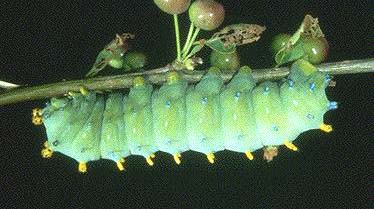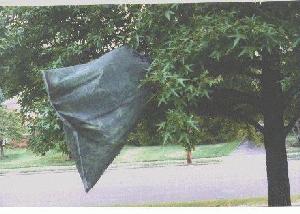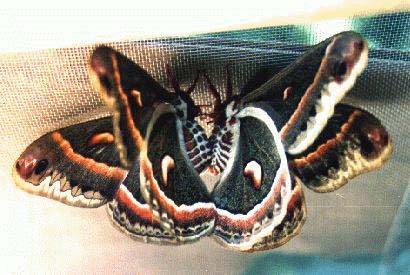
 | Thousands of people, all over the world, have reared saturniidae. For most, the experience has largely been one of finding a few larvae, taking them home, feeding them some leaves in an aquarium, large jar, etc., watching them spin their cocoons, and then waiting for the adult emergence. Many people have found an H. cecropia larva on an ornamental tree in the yard. |
Breeders who supply zoos, research projects, individual hobbyists, etc., usually do not have the time or space to raise large numbers of larvae anywhere but outdoors in large sleeves or cages over host food plants. Here, a relatively small, fibreglass sleeve, as might be used for A. luna larvae on sweetgum or A. polyphemus larvae on oak, graces a front yard tree. Sleeves can be made of any kind of material that allows a regular air flow, protects the larvae from predation, and allows sunlight to get to the foliage. |  |
 Photo courtesy of Mike Soroka. A cage mating of cecropia |
Most females of the large saturniidae lay tiny eggs, either singly or
in small rows on the underside of leaves. Trying to find these eggs would
be like
looking for a needle in a haystack. Most people obtain ova in the
following ways: |